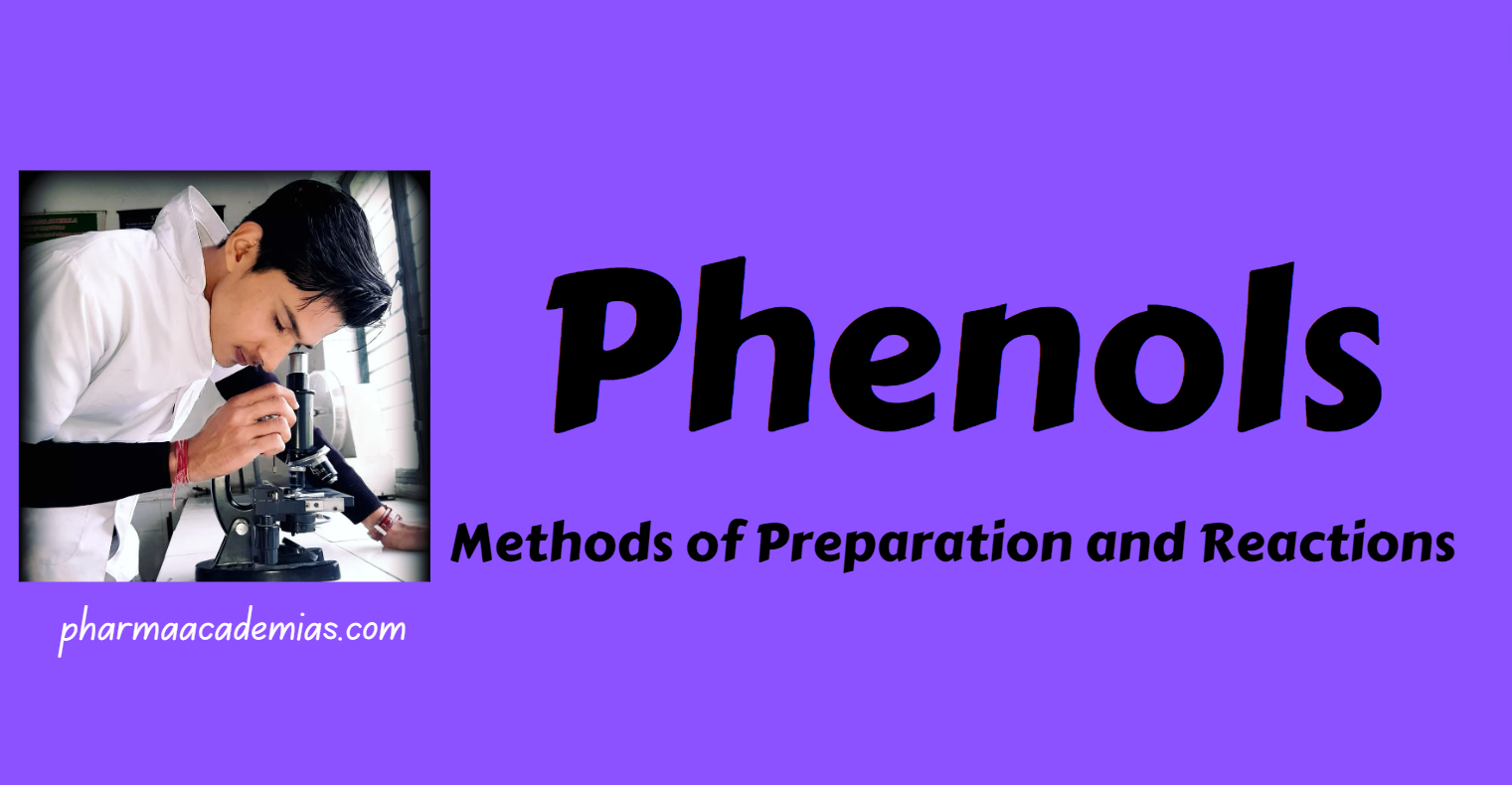Phenols are organic compounds characterized by a hydroxyl (-OH) group directly attached to an aromatic benzene ring (Ar-OH). Distinguished from alcohols by the aromatic ring, phenols exhibit unique chemical properties. The hydroxyl group imparts acidic and nucleophilic traits, rendering phenols weak acids. They are prevalent in natural sources, serving as antioxidants in plants, while synthetic phenols find applications in plastics, resins, and pharmaceuticals. In organic chemistry, phenols play a vital role in various reactions, showcasing their versatility in both natural and industrial contexts.
General Methods of Preparation and Reactions of Phenols
1. Preparation of Phenols
a. From Benzene Sulfonic Acids:
Treating benzene sulfonic acids with a strong base, such as sodium hydroxide, can synthesize phenols by eliminating a water molecule.
b. From Haloarenes:
In a strong base, haloarenes, particularly aryl halides, undergo nucleophilic substitution reactions with hydroxide ions, converting them to phenols.
c. From Cumene (Isopropylbenzene):
The cumene process entails oxidizing cumene (isopropylbenzene) with air to form cumene hydroperoxide, which is then cleaved to produce phenol and acetone.
d. From Diazonium Salts:
Obtained from the diazotization of aromatic amines, aryl diazonium salts can couple with phenolic compounds to form azo dyes, and subsequent reduction of the azo group yields phenols.
2. Reactions of Phenols
a. Electrophilic Aromatic Substitution:
Phenols undergo electrophilic aromatic substitution reactions, such as nitration and sulfonation, due to the activating nature of the hydroxyl group.
b. Kolbe-Schmitt Reaction:
This reaction involves the treatment of phenol with carbon dioxide under alkaline conditions, leading to the formation of salicylic acid.
c. Esterification:
Phenols can react with acid chlorides or anhydrides to form esters. An acid or base often catalyzes this reaction.
d. Oxidation:
Phenols can be oxidized to quinones or benzoquinones using oxidizing agents like potassium permanganate or chromates.
e. Bromination:
Phenols react with bromine water to form 2,4,6-tribromophenol. The presence of the hydroxyl group activates the benzene ring toward electrophilic substitution.
f. Diazo Coupling:
Phenols can couple with diazonium salts to form colored azo compounds. This reaction is the basis for the detection of phenols.
g. Reaction with Zinc Dust:
Phenols can be reduced to cyclohexadienols by treating them with zinc dust and hydrochloric acid.
3. Special Reactions
a. Knoevenagel Reaction:
Phenols can undergo Knoevenagel condensation with aldehydes or ketones in the presence of a base to form α and β-unsaturated carbonyl compounds.
Phenols can be acylated using acyl chlorides or anhydrides in a Lewis acid catalyst.
c. Claisen Condensation:
Phenols can participate in Claisen condensation reactions when treated with esters and a base, forming β-ketoesters.
Understanding the methods of preparation and reactions of phenols is crucial for their synthetic applications and the study of their chemical properties.

